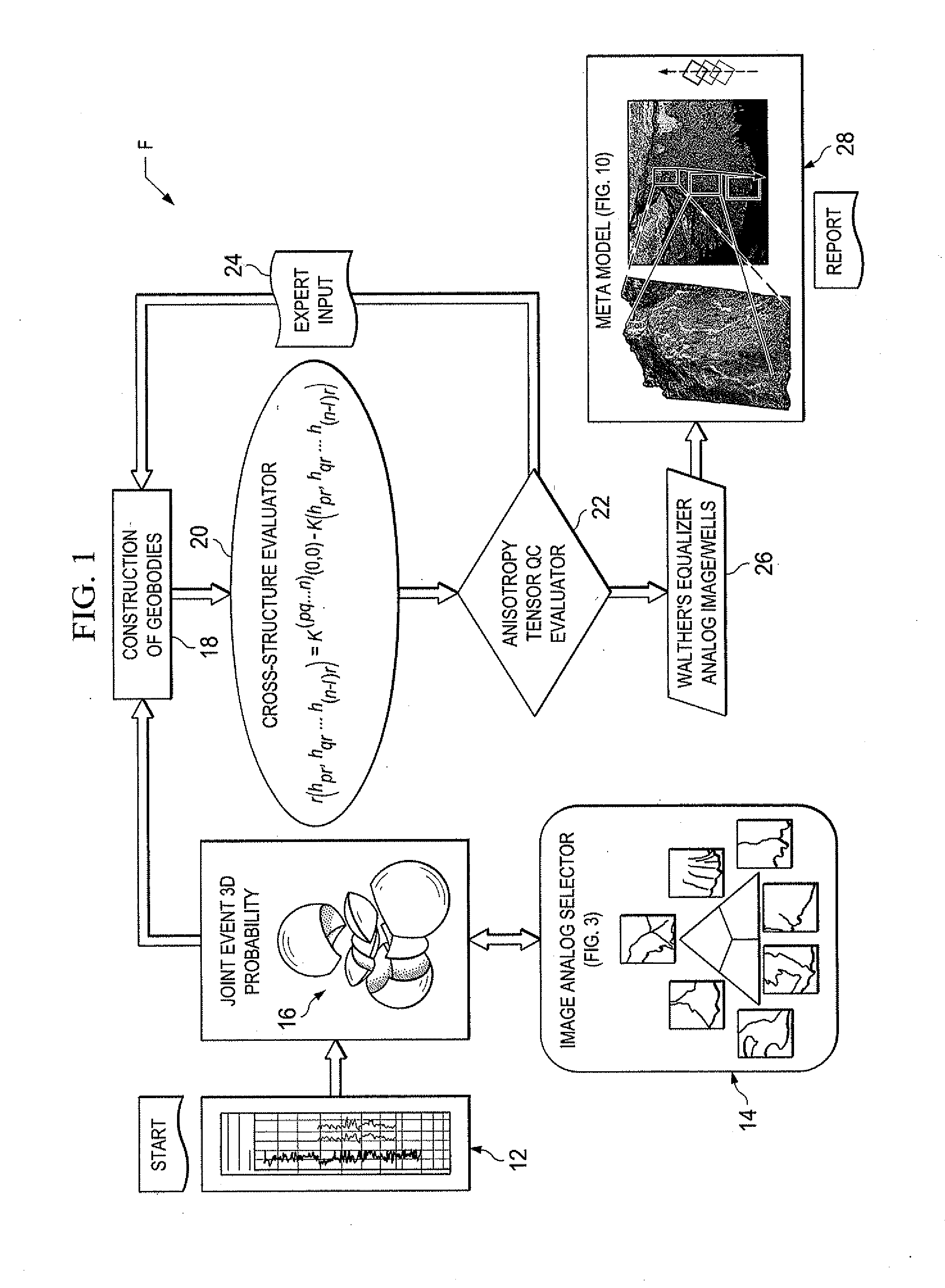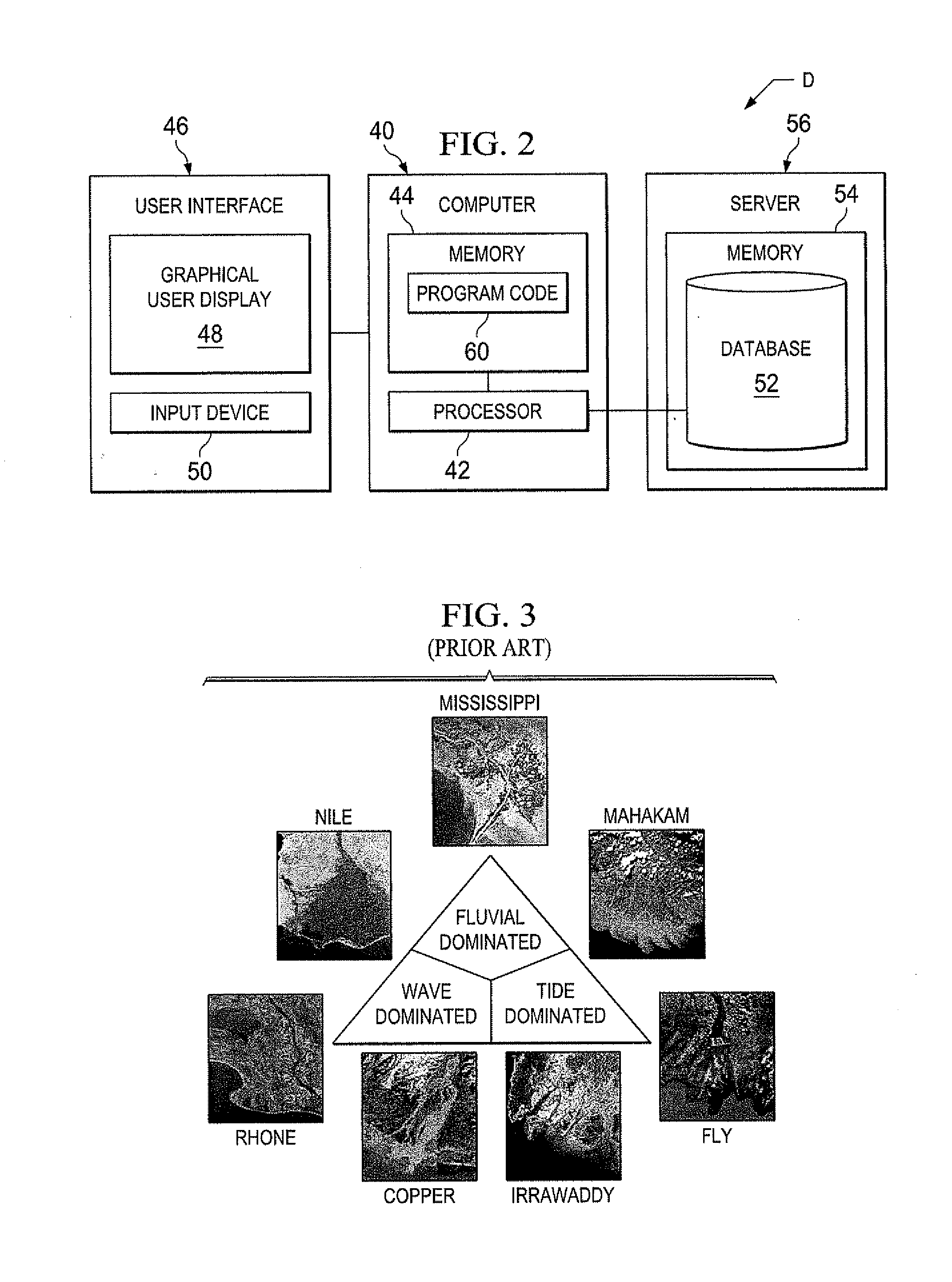Subsurface Directional Equalization Analysis of Rock Bodies
a technology of subsurface directional equalization and rock bodies, which is applied in the direction of instruments, analogue processes for specific applications, geomodelling, etc., can solve the problems of limited logging data prediction of facies at non-cored wells, inability to achieve seismic imaging at the required resolution, and many technical limitations in the workflow
- Summary
- Abstract
- Description
- Claims
- Application Information
AI Technical Summary
Benefits of technology
Problems solved by technology
Method used
Image
Examples
Embodiment Construction
[0026]In the drawings, FIG. 1 is a diagram or flow chart F of data processing steps according to the present invention. As will be set forth, the present invention provides subsurface directional analysis for forming an image based facies three-dimensional (3D) meta-model with unbiased vectors and tensor relations among rock bodies or complex objects in the directional subsurface depositional environment. The present invention provides novel physical-spatial-statistical analytical computer modeling tools which are applied to sequence stratigraphy for the characterization of geological heterogeneity of developed industrial oil / gas reservoirs, aquifers and sequences of rocks in the subsurface.
[0027]As shown in the flow chart F of FIG. 1, a preferred sequence of steps of a computer implemented method or process according to the present invention is illustrated schematically. The flow chart F is a high-level logic flowchart illustrates a method according to the present invention of form...
PUM
 Login to View More
Login to View More Abstract
Description
Claims
Application Information
 Login to View More
Login to View More - R&D
- Intellectual Property
- Life Sciences
- Materials
- Tech Scout
- Unparalleled Data Quality
- Higher Quality Content
- 60% Fewer Hallucinations
Browse by: Latest US Patents, China's latest patents, Technical Efficacy Thesaurus, Application Domain, Technology Topic, Popular Technical Reports.
© 2025 PatSnap. All rights reserved.Legal|Privacy policy|Modern Slavery Act Transparency Statement|Sitemap|About US| Contact US: help@patsnap.com



